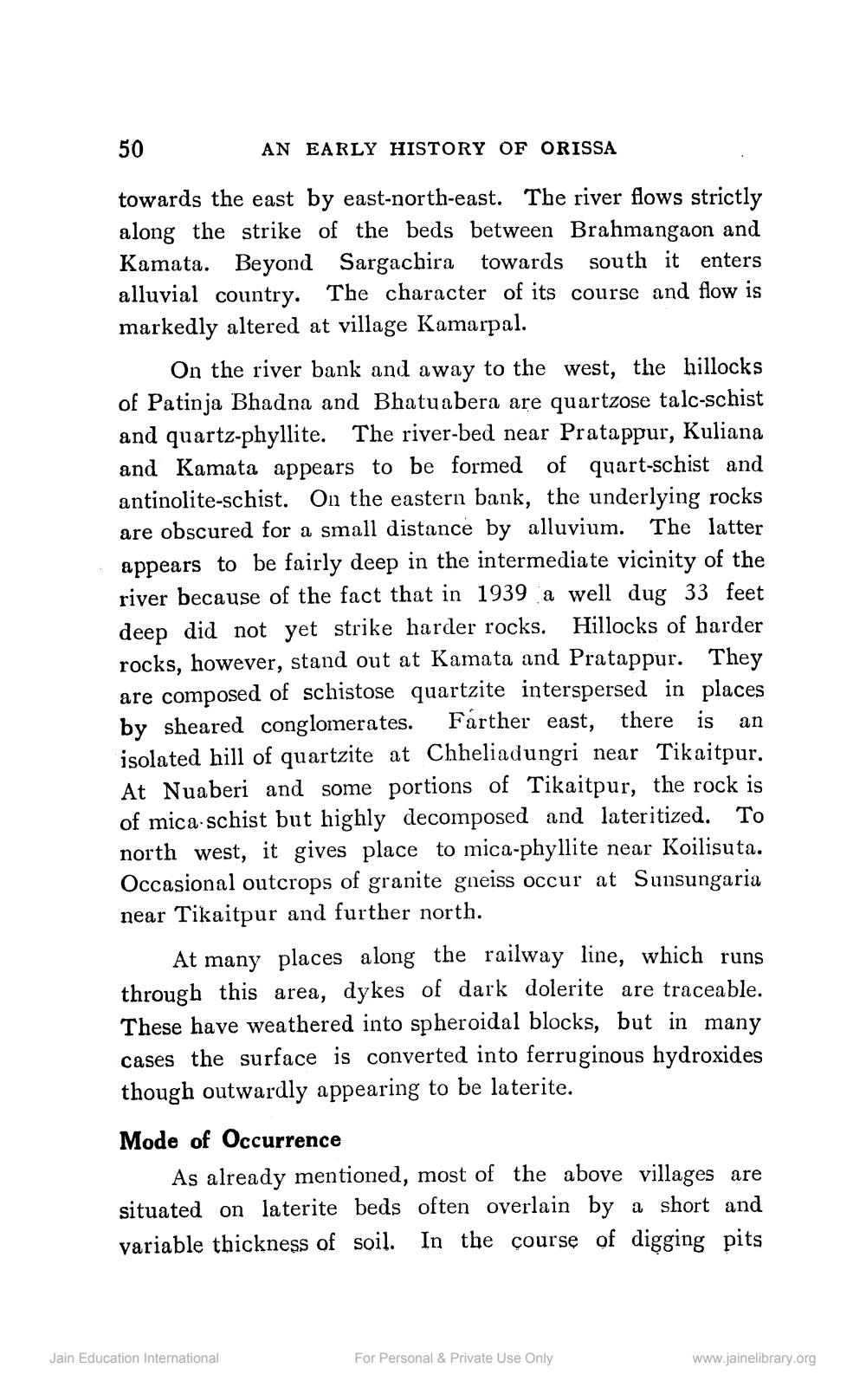________________
50
AN EARLY HISTORY OF ORISSA
towards the east by east-north-east. The river flows strictly along the strike of the beds between Brahmangaon and Kamata. Beyond Sargachira towards south it enters alluvial country. The character of its course and flow is markedly altered at village Kamarpal.
On the river bank and away to the west, the hillocks of Patinja Bhadna and Bhatuabera are quartzose talc-schist and quartz-phyllite. The river-bed near Pratappur, Kuliana and Kamata appears to be formed of quart-schist and antinolite-schist. On the eastern bank, the underlying rocks are obscured for a small distance by alluvium. The latter appears to be fairly deep in the intermediate vicinity of the river because of the fact that in 1939 a well dug 33 feet deep did not yet strike harder rocks. Hillocks of harder rocks, however, stand out at Kamata and Pratappur. They are composed of schistose quartzite interspersed in places by sheared conglomerates. Farther east, there is an isolated hill of quartzite at Chheliadungri near Tikaitpur. At Nuaberi and some portions of Tikaitpur, the rock is of mica.schist but highly decomposed and lateritized. To north west, it gives place to mica-phyllite near Koilisuta. Occasional outcrops of granite gneiss occur at Sunsungaria near Tikaitpur and further north.
At many places along the railway line, which runs through this area, dykes of dark dolerite are traceable. These have weathered into spheroidal blocks, but in many cases the surface is converted into ferruginous hydroxides though outwardly appearing to be laterite. Mode of Occurrence
As already mentioned, most of the above villages are situated on laterite beds often overlain by a short and variable thickness of soil. In the course of digging pits
Jain Education International
For Personal & Private Use Only
www.jainelibrary.org




